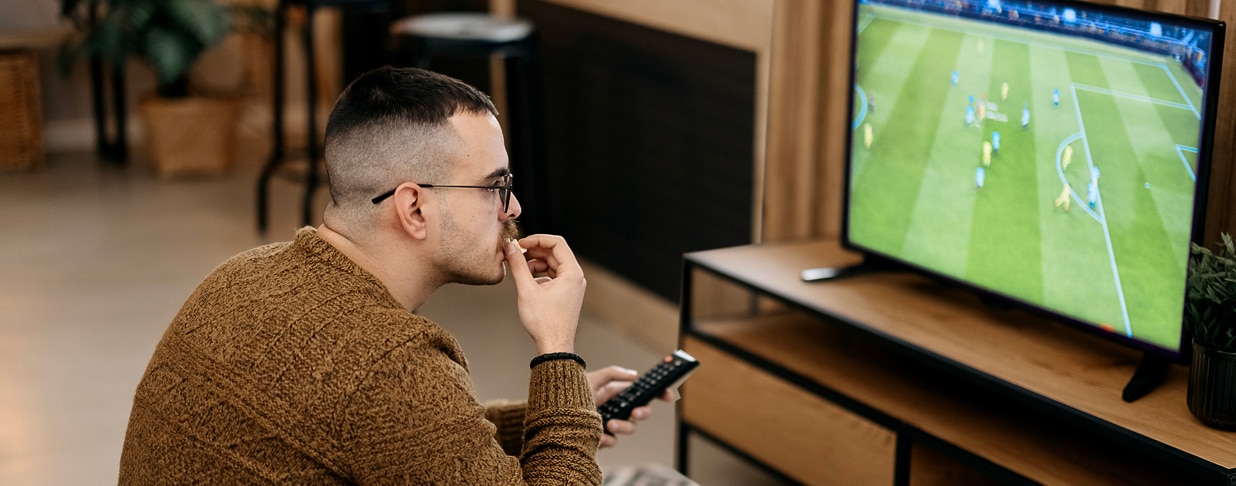Getting new glasses can be exciting. But choosing the right lenses for your new frames can be overwhelming. With so many choices, it is best to have a bit of background before shopping. To help you and your employees understand all the options, here are some of the most common lens types, materials and enhancements, along with some guidance for selecting the perfect pair.
LENS TYPES
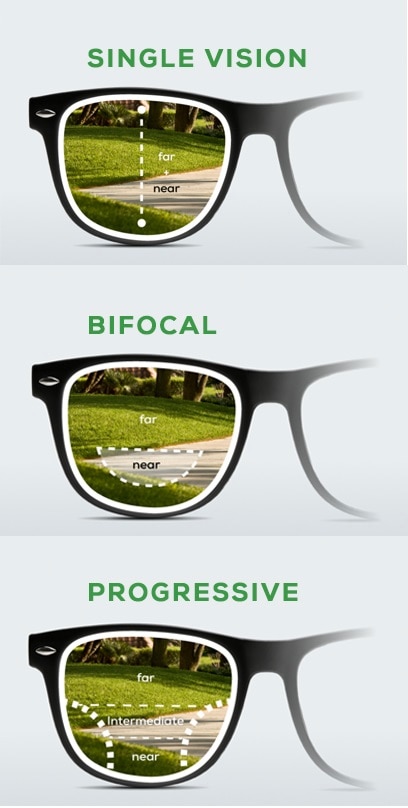
Single vision
Single vision lenses are the most commonly prescribed lenses. They were developed for people who need to correct one field of vision, whether it's nearsightedness or farsightedness, and can be used to correct astigmatism.1 They have the same power of correction across the entire surface of the lens
Bifocal
See a line in the lens? Then it is a bifocal. Originally invented by Benjamin Franklin, bifocals include two different areas of vision correction divided by a distinct line that sits horizontally across the lens. The top portion of the lens is used for distance and the bottom portion is for close vision.
Progressive
Known as no-line bifocals, progressive lenses are a perfect marriage of form and function. With no lines across the lens, others won’t even know you’re wearing a multi-focal lens. They provide a graduated range of vision that varies from seeing distance on the top to reading on the bottom. This is often the best lens for vision correction at all distances.
Trifocals
With trifocal lenses, you get three focal points in one lens. The lens powers start with close vision at the bottom of the lens, mid-vision through the middle and distance through the top. While still preferred by some, trifocals are becoming less common with more people opting for seamless, progressive lenses.
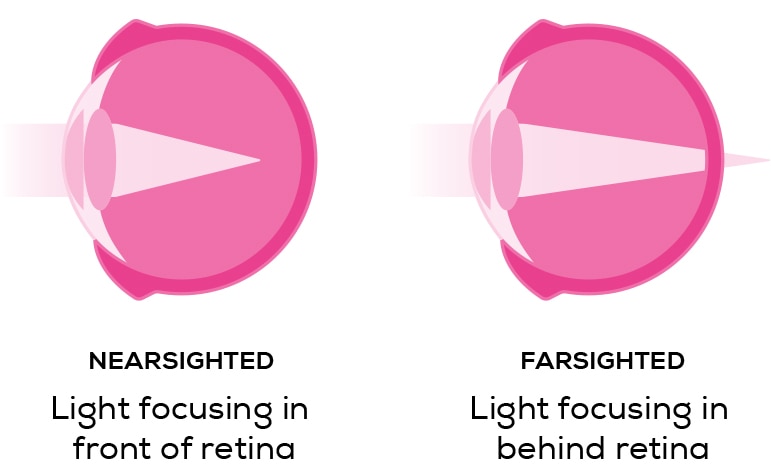
LENS MATERIALS
Plastic
Originally introduced in 1947, standard plastic lenses have become the most economical and commonly used material for eyeglass lenses. They’re more lightweight, thinner and more impact resistant than glass lenses. With excellent optical qualities, they’re often relatively inexpensive for value-conscious consumers.3
Polycarbonate
Originally created for helmet visors for the US Air Force, a polycarbonate lens is also impact resistant. It is thinner and lighter than plastic and provides 99% UV protection.4 Polycarbonate lenses are perfect for people with active lifestyles, children and those who need safety glasses. But they can scratch, so be sure to ask for a protection coating to help.
High index
High-index is a super thin lens. More lightweight than polycarbonate, it offers the same degree of visual correction using less material. These lenses are best for individuals with strong prescriptions who want a thinner look.
LENS ENHANCEMENTS
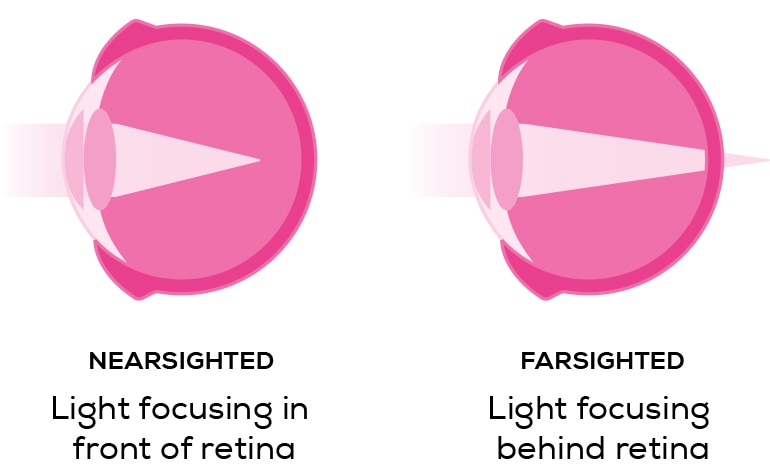
How the eye works
To have clear vision, any light entering the eye must land, or focus, on the retina at the back of the eye. But when the shape of the eye causes the light to focus in front of or behind the retina, the result is blurry vision—that is, either nearsightedness or farsightedness.
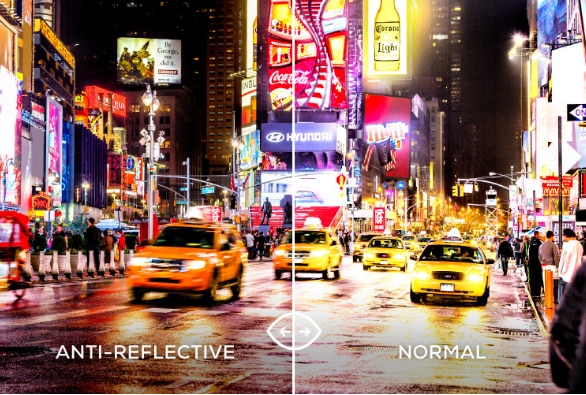
Anti-reflective
While polarized lenses cut the glare reflecting off external objects, anti-reflective (AR) lenses have a coating that reduces internal reflections in the lens itself. It can improve night vision while also reducing headaches, blurred vision and watery eyes caused by eye strain.8 The coating also makes lenses nearly invisible. AR lenses are especially useful for people who do a lot of night driving or computer work.9
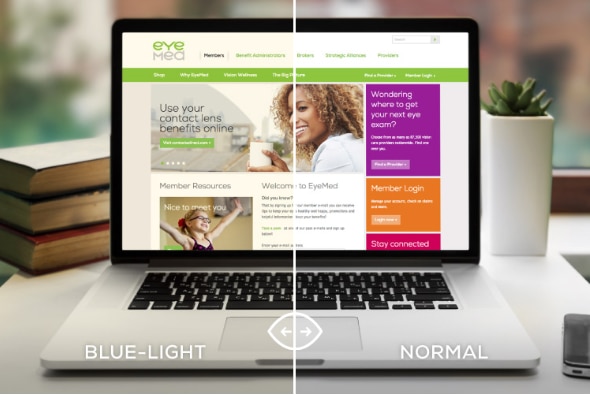
Blue Light
Blue light protection may either be incorporated into the lens material itself, or it may be added to a lens as a finishing coat. These special lens treatments provide protection from harmful high-energy blue light coming from digital devices. And they can help combat the effects this artificial light can cause, including blurry vision, difficulty focusing, dry and irritated eyes, headaches and even macular degeneration.10
Nearsightedness
Nearsightedness, or myopia, occurs when light coming into the eye focuses in front of the retina instead of directly on it. Far-away objects appear blurry, while objects closer to the eye look clearer.
Causes
Light focuses in front of the retina when the eye is elongated or the cornea is too steep, but what causes those changes is still unknown. Nearsightedness tends to begin in children, and certain habits can make it worse, like reading without breaks or looking at smart devices up close for long periods of time. Spending time outdoors in natural light is one of the ways to reduce the risk of myopia and reduce its progression to higher levels.3
Signs and symptoms
In addition to far-away objects looking blurry and close-up objects looking clear, other symptoms of myopia include:
- Eye strain and eyes that feel fatigued
- Squinting
- Headaches
- Eye rubbing
- In children, trouble concentrating or needing to sit close to the front of the classroom
Treatment
Eye doctors can test for nearsightedness at annual eye exams. The test may result in a prescription—a numeral representing the strength of the lens needed to correct myopia for glasses or contacts. Hard contact lenses used at night (called orthokeratology) can also be used to help reshape the cornea. To permanently correct nearsightedness and eliminate the need for corrective lenses, laser surgery is also an option. During laser surgery, the cornea is reshaped so that the light entering it lands correctly on the back of the retina.
---------------
EssilorLuxottica is developing lens technologies that are helping slow the progression of childhood myopia.
Click here to learn more about Stellest and SightGlass innovations.
Farsightedness
Farsightedness, or hyperopia, is the exact opposite of nearsightedness—light coming into the eye focuses too far beyond the retina instead of directly on it. It makes things far away appear clear, while objects closer to the eye look blurry.
Causes
Issues with the cornea or an eye that grows too short from front to back can contribute to farsightedness. Due to the flexibility of the eye in young people, many children are farsighted (in fact, most infants are farsighted)4, but may not have symptoms. They may not need glasses, or they may outgrow farsightedness—but still need to see an eye doctor. Untreated farsightedness can worsen and lead to amblyopia (lazy eye) or vision loss.5
Farsightedness is also a normal part of aging. Presbyopia—gradually losing the ability to read things up close around or after age 40—occurs as the eye becomes more rigid, making it more difficult to change shape to focus on things far away instead of up close. While there’s no way to stop presbyopia’s progression, it can be corrected with progressive eyeglasses or contacts, or even surgery.6
Signs and symptoms
Besides close-up objects looking blurry and far-away objects looking clear, signs of being far-sighted include:
- Eye strain and eyes that feel fatigued
- Headaches
- Difficulty writing or reading books or screens
- Difficulty with depth perception
Treatment
Like myopia, eye doctors can test for hyperopia at annual eye exams. The test may result in a prescription, which can be used to get the right corrective glasses or contact lenses. To permanently correct farsightedness and eliminate the need for corrective lenses, laser surgery is also an option. During laser surgery, the cornea is reshaped so that the light entering it lands correctly on the back of the retina.
Can you be nearsighted and farsighted?
While it’s rare to be both nearsighted and farsighted, it is possible. A condition called anisometropia refers to differing refractive errors in each eye, but when one eye is nearsighted and one is farsighted, it’s called antimetropia.7 You cannot be nearsighted and farsighted in the same eye.
Learning more
For more resources on nearsightedness and farsightedness, contact your EyeMed representative or visit eyemed.com.
••••
1 Thomson, E.; “Why short-sightedness is on the rise and what can be done”; World Economic Forum; weforum.org; November 2, 2022.
2 “Nearsightedness vs Farsightedness: How to Tell the Difference”; Vision Center; visioncenter.org; Updated December 1, 2022.
3 McManes, A.; “What causes nearsightedness (myopia)?”; All About Vision; allaboutvision.com; Updated March 3, 2022.
4 Altshul, S.; “What Is Hyperopia (Farsightedness)? Symptoms, Causes, Diagnosis, Treatment, and Prevention”; Everyday Health; everydayhealth.com; Reviewed May 26, 2021.
5 Porter, D.; “Farsightedness: What Is Hyperopia?”; American Academy of Opthalmology; aao.org; August 4, 2022.
6 Boyd, K.; “What Is Presbyopia?”; American Academy of Ophthalmology; aao.org; November 22, 2022.
7 “Anisometropia”; Cleveland Clinic; clevelandclinic.org; Reviewed October 4, 2022.




